 |
 |
 |
 |
 |
 |
| |
 |
|
 |
 |
 |
  |
  |
 |
 |
 |
 |
|
 |
|
 |
 |
 |
OPERE |
 |
|
 |
|
 |
 |
 |
|
|
 |
|
|
  Austria [Österreich]
Austria [Österreich]
» Vienna [Wien] |
|
|
|
|
 |
|
|
  Austria [Österreich]
Austria [Österreich]
» Vienna [Wien] |
|
|
|
|
 |
|
|
  Germania [Deutschland]
Germania [Deutschland]
» Freudenthal |
|
|
|
|
 |
|
|
  Austria [Österreich]
Austria [Österreich]
» Vienna [Wien] |
|
|
|
|
 |
|
|
  Belgio [Belgique/België]
Belgio [Belgique/België]
» Bruxelles [Bruxelles/Brussel] |
|
|
|
|
 |
|
|
  Austria [Österreich]
Austria [Österreich]
» Vienna [Wien] |
|
|
|
|
 |
|
|
  Austria [Österreich]
Austria [Österreich]
» Vienna [Wien] |
|
|
|
|
 |
|
|
  Austria [Österreich]
Austria [Österreich]
» Vienna [Wien] |
|
|
|
|
 |
|
|
  Austria [Österreich]
Austria [Österreich]
» Purkersdorf |
|
|
|
|
 |
|
|
  Austria [Österreich]
Austria [Österreich]
» Vienna [Wien] |
|
|
|
|
 |
|
|
  Austria [Österreich]
Austria [Österreich]
» Vienna [Wien] |
|
|
 |
 |
 |
 |
BIBLIOGRAFIA |
 |
|
|
 |
|
 |
 |
 |
 |
 |
 |
| SCRITTI SULL'AUTORE |
 |
|
|
 |
| Giovanni Fanelli, Ezio Godoli, Josef Hoffmann, Editori Laterza, 2005 |
|
|
| Giuliano Gresleri (ed.), Josef Hoffmann, Zanichelli, Bologna 1989 |
|
|
| Daniele Baroni, Antonio D'Auria, Josef Hoffmann e la Wiener Werkstätte, Electa Editrice, Milano 1981 |
|
 |
 |
 |
 |
MOSTRE |
 |
|
|
 |
|
 |
 |
 |
|
|
 |
| Josef Hoffmann: Beyond Beauty and Modernity, Brussels [Bruxelles] (Belgium/Belgique/België), RMAH Royal Museums of Art and History, 6 october 2023 / 14 april 2024 |
|
|
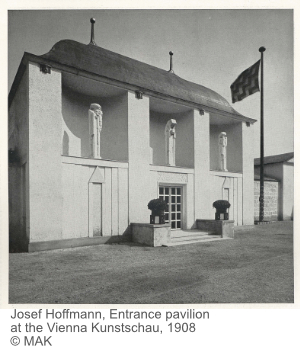 Josef Hoffmann: Fortschritt durch Schönheit / Progress Through Beauty Josef Hoffmann: Fortschritt durch Schönheit / Progress Through Beauty, Vienna [Wien], MAK - Österreichisches Museum für angewandte Kunst - Gegenwartskunst / Austrian Museum of Applied Arts / Contemporary Art, MAK Exhibition Hall, 15 december 2021 / 19 june 2022
To celebrate his 150th birthday the MAK is honoring the architect, designer, teacher, exhibition organizer, and cofounder of the Wiener Werkstätte Josef Hoffmann (1870– 1956) with the most comprehensive retrospective of his entire oeuvre ever shown. Hoffmann cultivated an exemplary modern lifestyle model and focused on aesthetics and beauty as the central parameters of modern design. The exhibition JOSEF HOFFMANN: Progress Through Beauty revisits every facet of the almost 60-year creative output produced by this influential global pioneer in architecture and design around 1900 and enriches the systematic research into and dissemination of his legacy.
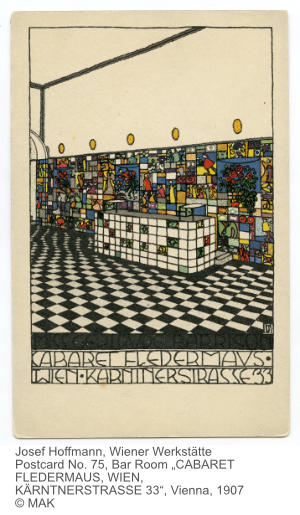 With an initially puristic design vocabulary, Josef Hoffmann carved out his position as one of the protagonists of Viennese Modernism. His ideal of the Gesamtkunstwerk—or total work of art—and his outstanding buildings like Stoclet House in Brussels (1905– 1911), now a UNESCO World Heritage Site, left a mark on the architectural and artistic landscape both nationally and internationally. Although this all-round designer has featured in every important exhibition on Viennese Modernism, only sections of his oeuvre have been analyzed in full. With an initially puristic design vocabulary, Josef Hoffmann carved out his position as one of the protagonists of Viennese Modernism. His ideal of the Gesamtkunstwerk—or total work of art—and his outstanding buildings like Stoclet House in Brussels (1905– 1911), now a UNESCO World Heritage Site, left a mark on the architectural and artistic landscape both nationally and internationally. Although this all-round designer has featured in every important exhibition on Viennese Modernism, only sections of his oeuvre have been analyzed in full.
To mark this year’s anniversary the exhibition’s team of curators—Matthias Boeckl, Rainald Franz, and Christian Witt-Dörring—set themselves the task of closing the gaps that still exist in the research by using at times unknown sources and by updating his catalogue raisonné. According to the curators, the perception of Hoffmann’s creative work as an architect and designer is incomplete in terms of the sources used, oversimplified in terms of design aspects, and limited in terms of his geographical and historical sphere of influence.
In 20 chapters and with over 800 exhibits, the exhibition JOSEF HOFFMANN: Progress Through Beauty introduces visitors to his prodigious lifework, which covers every single aspect of daily life, including architecture, interior design, fashion, and practical objects. Originally from a wealthy middle-class family in Brtnice, now in the Czech Republic, Hoffmann lived through five different political regimes, from the Habsburg Monarchy to the Second Austrian Republic. He was considered a creator of taste and identity and lived an exemplary modern lifestyle as a teacher of many years, as an influential designer in the decorative arts, and as cofounder of the Vienna Secession, the Wiener Werkstätte, and the Werkbund. In his groundbreaking mindset he united an artistically ambitious architectural approach with an artisanally inspired product culture.
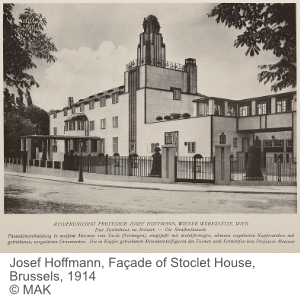 The exhibition covers every stage of his life from his youth and studies at the Academy of Fine Arts Vienna to his death in 1956. The focus of the exhibition is his work’s lasting impact on architecture, the decorative arts, and design, starting with his most prominent projects and buildings: Sanatorium Westend in Purkersdorf (1904/05), Stoclet House in Brussels (1905–1911), the Kunstschau in Vienna (1908), the Austrian pavilion for the Werkbund exhibition in Cologne (1914), the pavilion for the International Exposition of Modern Decorative and Industrial Arts in Paris (1925), the Werkbundsiedlung [Werkbund Estate] in Vienna (1931), and the pavilion for the Venice Biennale (1934). A multimedia timeline guides visitors through Hoffmann’s life and draws attention to forgotten projects and texts. The exhibition covers every stage of his life from his youth and studies at the Academy of Fine Arts Vienna to his death in 1956. The focus of the exhibition is his work’s lasting impact on architecture, the decorative arts, and design, starting with his most prominent projects and buildings: Sanatorium Westend in Purkersdorf (1904/05), Stoclet House in Brussels (1905–1911), the Kunstschau in Vienna (1908), the Austrian pavilion for the Werkbund exhibition in Cologne (1914), the pavilion for the International Exposition of Modern Decorative and Industrial Arts in Paris (1925), the Werkbundsiedlung [Werkbund Estate] in Vienna (1931), and the pavilion for the Venice Biennale (1934). A multimedia timeline guides visitors through Hoffmann’s life and draws attention to forgotten projects and texts.
A reconstruction of the Boudoir d’une grande vedette [Boudoir for a Big Star] (1937), designed by Josef Hoffmann for the Paris World’s Fair, makes it possible to instantly experience Hoffmann’s sense of space. Furnishings like furniture and light fixtures for Árpád Lengyel’s villa in Bratislava (1929) will be on public display for the very first time, as will other never-before-seen furnishings from the villa for Sonja Knips (1924) and a variety of Josef Hoffmann’s designs that were previously hidden in archives like that of the company J. & L. Lobmeyr.
With this exhibition and its accompanying catalog, the MAK is helping to paint a much richer and more detailed picture of Josef Hoffmann as a creator and teacher and to show his role—from Modernism to the present day—in a different light. As a competence center of Viennese Modernism, the MAK is home to the world’s most comprehensive holdings of furniture, objects, and designs by Hoffmann. The MAK and the Moravian Gallery in Brno run a joint branch in the house where Josef Hoffmann was born in Brtnice, Czech Republic.
December 2020
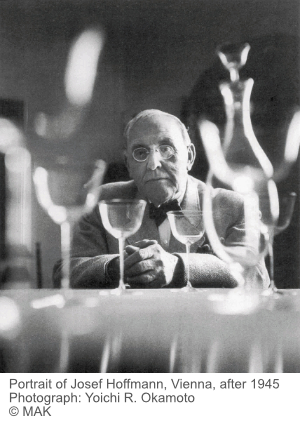 Originally intended to open in December 2020 to coincide with Josef Hoffmann’s 150th birthday, the exhibition JOSEF HOFFMANN: Progress Through Beauty has been post- poned for one year. The most comprehensive retrospective ever mounted on the lifework of Josef Hoffmann (1870–1956) will now be on display in the MAK Exhibition Hall from 15 December 2021 to 19 June 2022. In 20 chapters and with over 800 exhibits, the team of curators—Matthias Boeckl, Rainald Franz, and Christian Witt-Dörring—aims to revisit the entire 60-year oeuvre of this architect, designer, teacher, exhibition organizer, and cofounder of the Wiener Werkstätte. In light of the show’s conceptual and organizational dimensions and associated expense, the MAK is hoping for considerably more favorable circumstances come the opening of the exhibition late next year in order to have the broadest possible impact—not only within Austria, but also internationally.
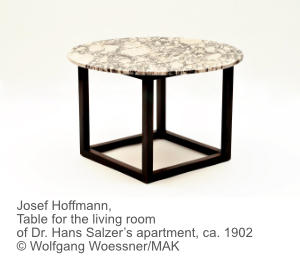 These challenging times during the pandemic have significantly impeded the presentation of rarely shown objects from international collections, which are able to spotlight new facets of Josef Hoffmann’s oeuvre. Furthermore, the later opening date for the exhibition makes it possible to extend the duration of this MAK project: instead of being on display for four months as originally planned, the exhibition can now be shown for half a year. These challenging times during the pandemic have significantly impeded the presentation of rarely shown objects from international collections, which are able to spotlight new facets of Josef Hoffmann’s oeuvre. Furthermore, the later opening date for the exhibition makes it possible to extend the duration of this MAK project: instead of being on display for four months as originally planned, the exhibition can now be shown for half a year.
Initial insights into the exhibition JOSEF HOFFMANN: Progress Through Beauty are afforded by a discussion event to be held at the MAK on Josef Hoffmann’s 150th birthday, 15 December 2020.
The publication to accompany the exhibition, entitled JOSEF HOFFMANN 1870–1956: Progress Through Beauty. The Guide to His Oeuvre, edited by Christoph Thun- Hohenstein, Matthias Boeckl, Rainald Franz, and Christian Witt-Dörring, will be released as a German and an English edition in spring 2021 by the Birkhäuser Verlag, Basel. In 40 essays renowned international experts analyze Hoffmann’s most important buildings, interiors, and exhibitions, as well as decorative art designs and objects. Drawing on the latest research, the guide conveys the multimedia approach and wide-ranging international reception of Hoffmann’s artistic vision and is set to become a new standard reference work on Viennese Modernism in an international context. |
|
|
| 15 Years of the Josef Hoffmann Museum, Brtnice (Czech Republic), Josef Hoffmann Museum, 18 may / 1 november 2020 |
|
|
Josef Hoffman - Otto Prutscher, Brtnice (Czech Republic), Josef Hoffmann Museum, 1 july / 31 march 2022
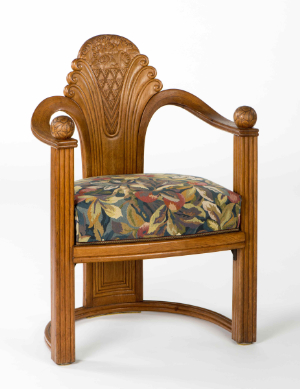 The 2019 annual exhibition in the Josef Hoffmann Museum in Brtnice, a joint exhibition of the Moravian Gallery, Brno, and the MAK, Vienna, is dedicated to Josef Hoffmann’s (1870–1956) association with Otto Prutscher (1880–1949). Like Hoffmann an architect and designer, Prutscher was master of all materials used in the applied arts. He was an exhibition designer, a teacher, and a member of the most important reform movements in art from the Secession to the Wiener Werkstätte and the Werkbund. On the occasion of the 70th anni- versary of Otto Prutscher’s death this year, the exhibition highlights the importance of his work for the development of Viennese Modernism. The 2019 annual exhibition in the Josef Hoffmann Museum in Brtnice, a joint exhibition of the Moravian Gallery, Brno, and the MAK, Vienna, is dedicated to Josef Hoffmann’s (1870–1956) association with Otto Prutscher (1880–1949). Like Hoffmann an architect and designer, Prutscher was master of all materials used in the applied arts. He was an exhibition designer, a teacher, and a member of the most important reform movements in art from the Secession to the Wiener Werkstätte and the Werkbund. On the occasion of the 70th anni- versary of Otto Prutscher’s death this year, the exhibition highlights the importance of his work for the development of Viennese Modernism.
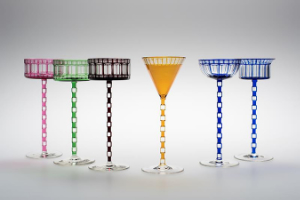 Starting in the 1980s—together with the protagonists of the “Vienna Style” around 1900— Otto Prutscher started to gain wider recognition. Similar to Josef Hoffmann, the first comprehensive studies of whose works appeared in Italy after the Second World War, in Otto Prutscher’s case it was the Italian architectural journal Metamorfosi that, in 1994, issued his “Unpublished works from archives in Como and Vienna”. Starting in the 1980s—together with the protagonists of the “Vienna Style” around 1900— Otto Prutscher started to gain wider recognition. Similar to Josef Hoffmann, the first comprehensive studies of whose works appeared in Italy after the Second World War, in Otto Prutscher’s case it was the Italian architectural journal Metamorfosi that, in 1994, issued his “Unpublished works from archives in Como and Vienna”.
Ten years younger than Josef Hoffmann and Adolf Loos, Otto Prutscher belonged to the first generation of Vienna Arts and Crafts School students to benefit from the curricular reforms directed by Felician von Mayrbach and from the teaching of young professors such as Josef Hoffmann and Koloman Moser. Prutscher mastered a range of materials in his father’s cabinetmaking workshop, as well as as in bricklaying and carpentry apprenticeships, completed in the summer vacations.
After his acceptance at the the Vienna Arts and Crafts School in 1897, Prutscher took a course with Willibald Schulmeister in ornamental drawing, and later for two semesters a specialist class in architecture with Josef Hoffmann. The training he received from the secessionist architect Hoffmann and the premodern painter Matsch was to leave its mark on Prutscher’s designs and completed works—in terms of both the graphic quality of his designs and his orientation towards current trends in architecture. From 1907 Prutscher began to work for the Wiener Werkstätte, and from 1909 he taught, like Hoffmann, at the Arts and Crafts School.
Hoffmann worked with Prutscher for decades on projects such as the Vienna Kunstschau of 1908 and the Cologne Werkbund exhibition of 1914, sharing with him an unbounded creative drive. Today Prutscher’s recorded oeuvre includes over 50 buildings (villas, apartment houses, and portals), nearly 50 exhibitions organized and designed alone or with others, some 170 installations, over 300 designs for installations, and over 200 suites and individual pieces of furniture.
Prutscher’s designs were implemented by more than 200 enterprises, principally the Wiener Werkstätte but also important manufactories such as Backhausen, Klinkosch, Augarten, Meyr’s Neffe, Schappel and Melzer & Neuhardt, and the Deutsche Werkstätten in Dresden. In addition he was artistic advisor to Thonet, Loetz Witwe, and Wienerberger. Twenty years after the first monograph on and exhibition of his work (Otto Prutscher. 1880–1949. Architektur, Interieur, Design [Otto Perutscher, 1880–1949: Architecture, Interior, Design], University of Applied Arts Vienna, 1997), the exhibition JOSEF HOFFMANN – OTTO PRUTSCHER discusses Prutscher’s complex achievement against the background of Hoffmann’s oeuvre. Both spatially and thematically, it is a continuation of the permanent exhibition JOSEF HOFFMANN: Inspirations, that since 2009 has been tracing the roots Hoffmann’s artistic inspiration in his birthplace Brtnice. Starting on 20 November 2019, the MAK will be presenting a comprehensive solo exhibition: OTTO PRUTSCHER. Allgestalter der Wiener Moderne [Otto Prutscher: Universal Designer of Viennese Modernism]. |
|
|
| Josef Hoffmann - Otto Wagner. On the Use and Effect of Architecture, Brtnice (Czech Republic), Josef Hoffmann Museum, 24 may 2017 / 6 may 2018 |
|
|
| The private Josef Hoffmann, Brtnice (Czech Republic), Josef Hoffmann Museum, 2 june / 1 november 2015 |
|
|
| Wege der Moderne. Josef Hoffmann, Adolf Loos und die Folgen / Ways to Modernism. Josef Hoffmann, Adolf Loos and Their Impact, Vienna [Wien], MAK - Österreichisches Museum für angewandte Kunst - Gegenwartskunst / Austrian Museum of Applied Arts / Contemporary Art, 17 december 2014 / 19 april 2015 |
|
|
| Ornament and Modernity. Josef Hoffmann 1870-1956. Architect and Designer, Brtnice (Czech Republic), Josef Hoffmann Museum, 27 june/26 october 2008 |
|
|
| Josef Hoffmann - Donald Judd. Hypothesis, Brtnice (Czech Republic), Josef Hoffmann Museum, 4 june/26 october 2008 |
|
|
| Josef Hoffmann-Adolf Loos, Brtnice (Czech Republic), Josef Hoffmann Museum, 6 june/28 october 2007 |
|
 |
  |
 |
|
|